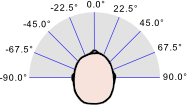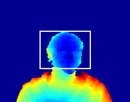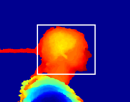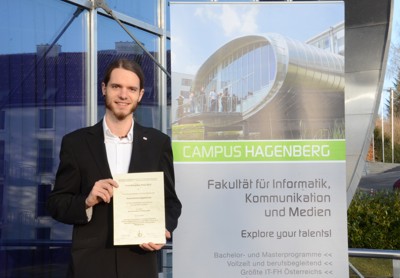
Josef Ressel Center for User-friendly Secure Mobile Environments
Rainhard Findling received the Fred Margulies Award 2015
After being awarded the OCG Incentive Award FH 2014, our co-worker Rainhard Findling has also been awarded the Fred Margulies Award 2015 (the award ceremony was on October 14th, 2016) for his master's thesis "Pan Shot Face Unlock: Towards Unlocking Personal Mobile Devices using Stereo Vision and Biometric Face Information from multiple Perspectives". The Fred Margulies award is awarded annually by the International Federation of Automatic Control (IFAC) Advisory Board Austria (German: IFAC Beirat Österreich) for outstanding Austrian scientific work in the field of automation, with special emphasis on social aspects. Laureates are selected by an international jury based on innovation, scientific content, economic and social relevance, and interdisciplinarity.

 The thesis investigates the pan shot face unlock: a mobile device face unlock, where users slide their device - with the device camera pointing towards them - 180 degrees from one side of their head over the face to the other side ("pan shot"). The approach combines 2D and 3D visual face data (grayscale and range camera images, if available) from different perspectives of the 180 degree swipe with sensoric information (device rotation from devices' built-in gyroscope sensors). The combination of these measurements is used to determine if the face swipe was done by the legitimate user or an illegitimate user, trying to get unauthorized access to the device.
The thesis investigates the pan shot face unlock: a mobile device face unlock, where users slide their device - with the device camera pointing towards them - 180 degrees from one side of their head over the face to the other side ("pan shot"). The approach combines 2D and 3D visual face data (grayscale and range camera images, if available) from different perspectives of the 180 degree swipe with sensoric information (device rotation from devices' built-in gyroscope sensors). The combination of these measurements is used to determine if the face swipe was done by the legitimate user or an illegitimate user, trying to get unauthorized access to the device.

 In terms of cognitive load, the approach is conceptually more user-friendly than currently widespread unlock approaches, such as PIN, password or unlock patterns. It does not require users to remember a secret to unlock their devices (which would get more complicated with an increasing amount of devices owned per user). In comparison to traditional face unlock approaches, the pan shot face unlock is harder to circumvent using photo or video attacks. Traditional face unlock approaches usually only utilize frontal face information - which can easily be obtained by attackers today (e.g. pictures from social media platforms). These can be used to circumvent the unlock using a photo attack (attacker presenting the images or videos to the device to unlock it). With the pan shot face unlock, an attacker would be required to obtain 2D and 3D face data of the legitimate user from multiple perspectives, and to present that data to the locked device while rotating it accordingly - which significantly raises the effort for a successful attack.
In terms of cognitive load, the approach is conceptually more user-friendly than currently widespread unlock approaches, such as PIN, password or unlock patterns. It does not require users to remember a secret to unlock their devices (which would get more complicated with an increasing amount of devices owned per user). In comparison to traditional face unlock approaches, the pan shot face unlock is harder to circumvent using photo or video attacks. Traditional face unlock approaches usually only utilize frontal face information - which can easily be obtained by attackers today (e.g. pictures from social media platforms). These can be used to circumvent the unlock using a photo attack (attacker presenting the images or videos to the device to unlock it). With the pan shot face unlock, an attacker would be required to obtain 2D and 3D face data of the legitimate user from multiple perspectives, and to present that data to the locked device while rotating it accordingly - which significantly raises the effort for a successful attack.
"The question of today's high-tech society no longer is, if we want to use some new technology, but how long we can afford not to use it. Therefore, it is of paramount importance to design technology in a sustainable, secure and safe way - including the increasing amount of mobile devices we all own," says Rainhard Findling. Rainhard further wants to thank his supervisor René Mayrhofer for the in-depth support throughout the studies, employment and thesis, as well as his colleagues and his family for their steady support.



